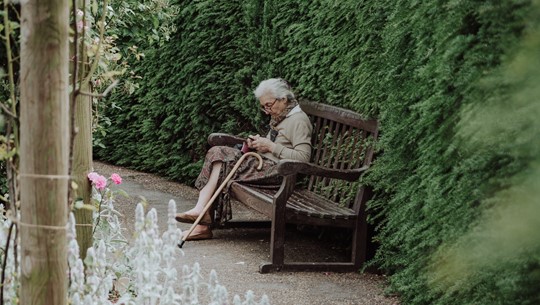Virtual housing support is support given to the citizen over the web cam possibly supplemented with apps for smartphones. Virtual housing support is video conversations, non-image conversations, or "conversations" via chat. It allows you to adapt your support to the needs of the individual citizen. In this way, virtual housing support helps to improve the quality of housing support for citizens who benefits from webcam calls and applications.
The citizen and the employee can use virtual housing support as a flexible and reassuring tool, which among others provide; security and greater continuity with several, shorter conversations, housing support on the go (vacation, education, etc.), talks on the citizen's premises - and under the citizen's control, safety in the transition to living at home and housing benefit for isolated citizens.
Virtual housing support is flexible because conversations are more and more controlled by when they are needed. It gives more peace to citizens and employees because they are not tied to time and place.
Virtual housing support can be particularly suitable for citizens with anxiety and for citizens who need security and frequent follow-up. It is also possible for the citizen to get support if a need arises between appointments, because a webcam conversation can be arranged with shorter notice than a traditional visit. This means that the problems or concerns do not grow as large as they could otherwise can between visits every 14 days. The solution has also given citizens courage to go out more and, fore example, dare to go on vacation and participate in social activities.
The users are people with a need of housing support. These citizens often experience that they go from having support to having no support in their homes. This can be a tool to out phasing the support and help the citizen feel more secure in their own homes. With virtual housing support, it is possible to reach new groups of citizens - particularly isolated citizens who have difficulty in social contact and therefore find it difficult to let another person into their home. Virtual housing support can be the opening that is needed to give these citizens the support they need. Employees can also, through virtual housing support, have more continuous contact with the citizens who often cancel or do not open up their doors. In the five communes where the solution has been implemented around 2,700 citizens are in the need of housing assistance.
 Distance treatment
Counseling via online tools with associated treatment or own treatment.
Distance treatment
Counseling via online tools with associated treatment or own treatment.
 Distance monitoring
Social care remotely with sensors, cameras, reminders and data collection.
Distance monitoring
Social care remotely with sensors, cameras, reminders and data collection.
 Distance meetings
Close care concepts that move the point of healthcare closer or into the citizens' own homes.
Distance meetings
Close care concepts that move the point of healthcare closer or into the citizens' own homes.
 New distance-spanning solutions
New innovative solutions, new national infrastructure for digital services and service models where citizens can take greater responsibility.
New distance-spanning solutions
New innovative solutions, new national infrastructure for digital services and service models where citizens can take greater responsibility.
 Show all solutions
Show solutions from all four categories
Show all solutions
Show solutions from all four categories
